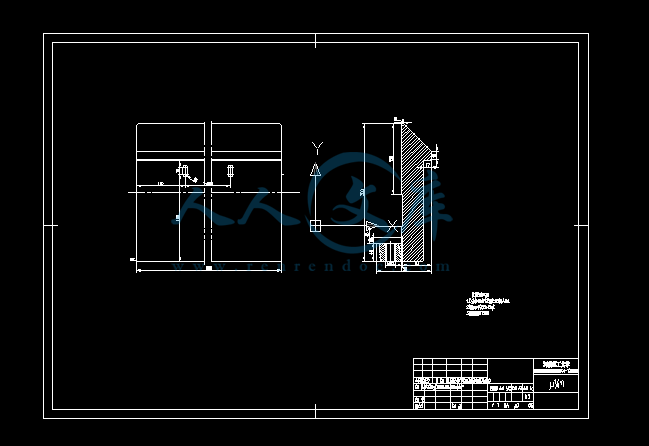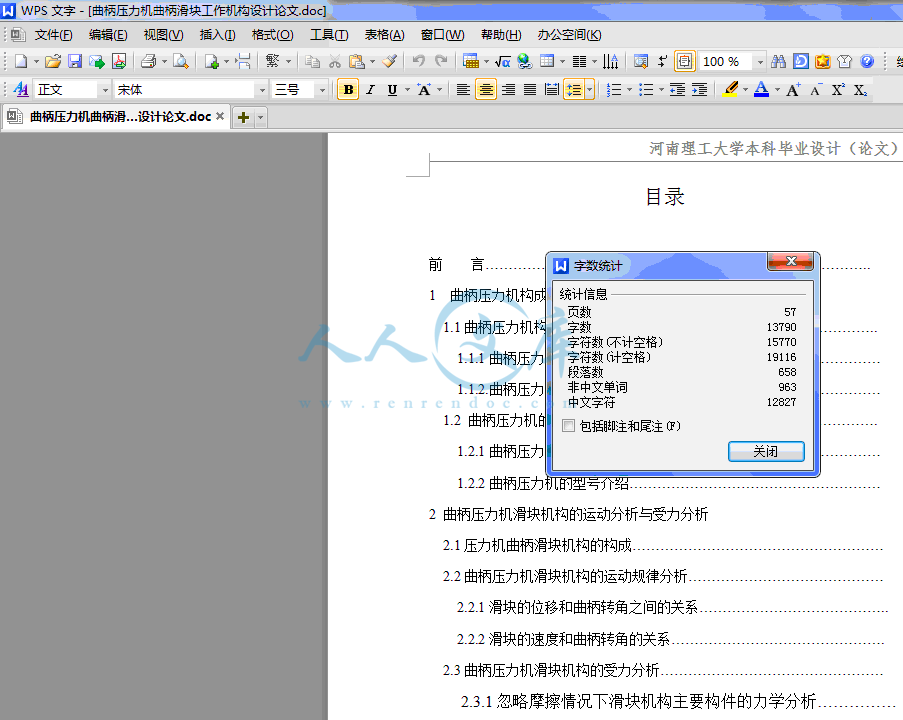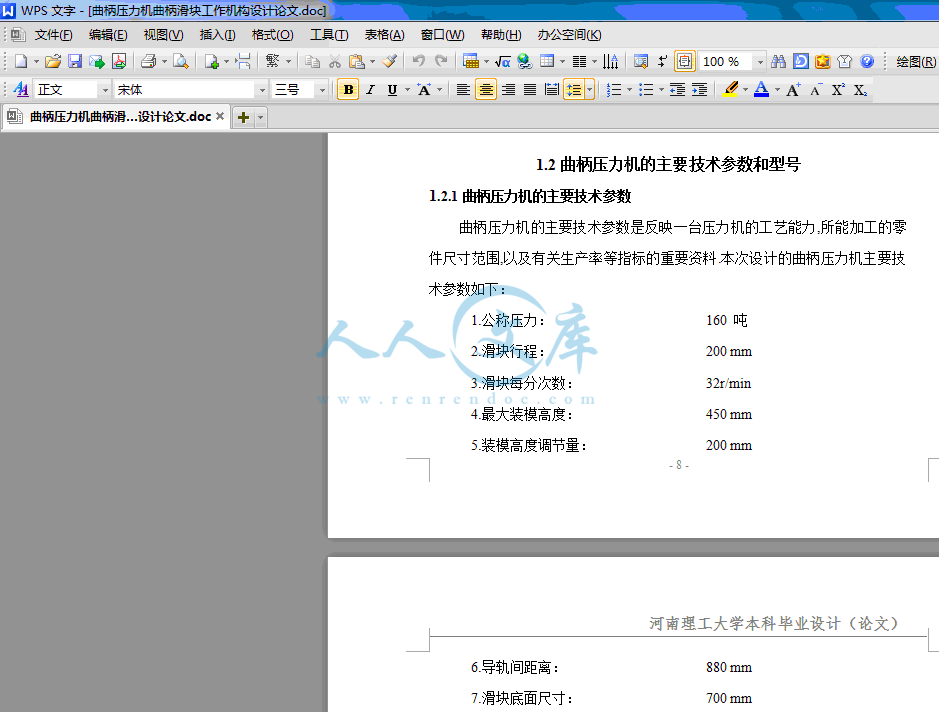曲柄压力机曲柄滑块工作机构设计







目录
前 言………………………………………………………………………..
1 曲柄压力机构成及工作原理和相关参数
1.1曲柄压力机构成及工作原理……………………………………………..
1.1.1曲柄压力机一般有工作部分构成……………………………………
1.1.2.曲柄压力机工作原理…………………………………………………
1.2 曲柄压力机的主要技术参数…………………………………………….
1.2.1曲柄压力机的主要技术参数…………………………………………
1.2.2曲柄压力机的型号介绍………………………………………………
2 曲柄压力机滑块机构的运动分析与受力分析
2.1压力机曲柄滑块机构的构成………………………………………………
2.2曲柄压力机滑块机构的运动规律分析……………………………………
2.2.1滑块的位移和曲柄转角之间的关系…………………………………..
2.2.2滑块的速度和曲柄转角的关系……………………………………….
2.3曲柄压力机滑块机构的受力分析…………………………………………
2.3.1忽略摩擦情况下滑块机构主要构件的力学分析……………
2.3.2考虑摩擦情况下滑块机构主要构件的力学分析……………
3 齿轮传动
3.1齿轮传动的介绍…………………………………………………………..
3.1.1齿轮在应用的过程中对精度要求………………………………….
3.2直齿轮传动……………………………………………………………….
3.2.1齿轮参数确定
3.2.2齿轮的尺寸初步计算
3.2.3 齿轮的强度校核
3.3锥齿轮传动………………………………………………………………
3.3.1几何参数的计算........................................
3.3.2 核算弯曲应力..........................................
3.4蜗杆蜗轮传动……………………………………………………………
3.4.1蜗杆传动的特点.......................................
3.4.2蜗杆蜗轮的材料.......................................
3.4.3蜗杆蜗轮尺寸的计算...................................
3.4.4 校核蜗轮蜗杆..........................................
4 曲柄压力机滑块机构的设计与计算。
4.1曲柄压力机滑块机构的构成……………………………………………
4.1.1选定轴的材料…………………………………………………………
4.1.2估算曲轴的相关尺寸
4.1.3 设计轴的结构并绘制结构草图
4.1.4 校核轴劲尺寸
4.1.5曲轴的危险阶面校核
4.2曲轴设计与计算…………………………………………………………
4.2.1 连杆和调节螺杆初步确定
4.2.2校核调节螺杆的和连杆尺寸
4.3连杆设计与计算…………………………………………………………
4.4导轨的设计与计算……………………………………………………..
4.5高度调节装置的设计……………………………………………………
5 轴承的选用
5.1滑动轴承的选用………………………………………………………….
5.1.1连杆大端滑动轴承选用与校核
5.1.2曲轴颈上滑动轴承选用与校核
5.2滚动轴承的选用………………………………………………………….
翻译………………………………………………………………………….
英语原文………………………………………………………………………..
后记………………………………………………………………………….
致谢………………………………………………………………………………
参考资料………………………………………………………………………
前言
制造业是一个国家经济发展的重要支柱,其发展水平标志着该国家的经济实力、科技水平和国防实力。压力机是机械制造业的基础设备。随着社会需求和科学技术的发展,对机床设计要求越来越高。尤其是模具制造的飞速出现,使机床向高速、精确,智能化的方向发展。因此,对压力机的精度和生产率等各方面的要求也就越来越高。
本次设计是结合中型压力机的工作实际,对JB31-160型曲柄压力机进行改造性设计。由于传统JB31-160型曲柄压力压力机,存在滑块运动精度底,装模高度调节麻烦,滑块行程量小等缺点,严重影响了生产效率。本次设计鉴于以上缺点对其进行了如下改正:1改进部件结构设计,采用新型材料。例如离合器部件,尽量减小其从动惯量,采用新兴摩擦材料。2调节装置方面,采用二级的锥齿——蜗杆蜗轮调节,节省了工人劳动量,又提高了精度。3采用了曲轴代替同类型的偏心轴,用变位齿轮代替普通齿轮,这样就减小了机身的高度,更方
 川公网安备: 51019002004831号
川公网安备: 51019002004831号